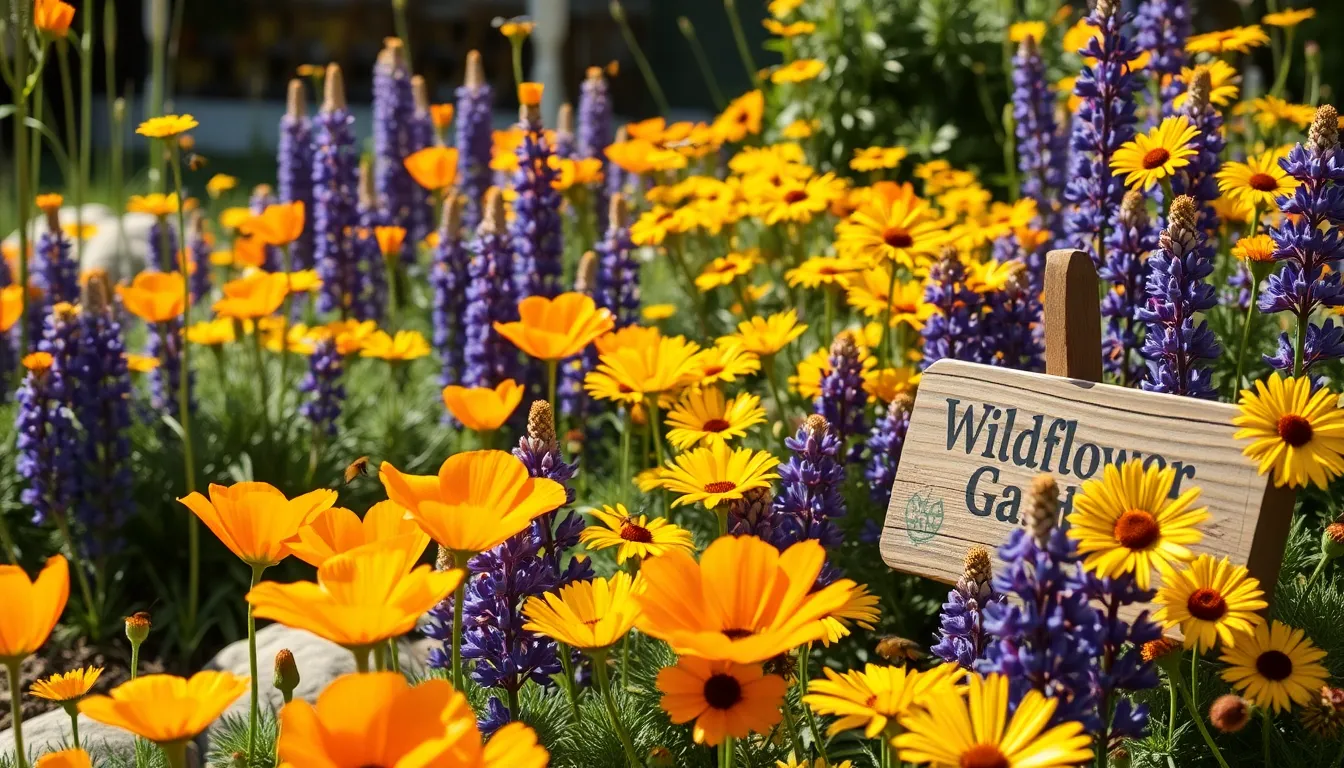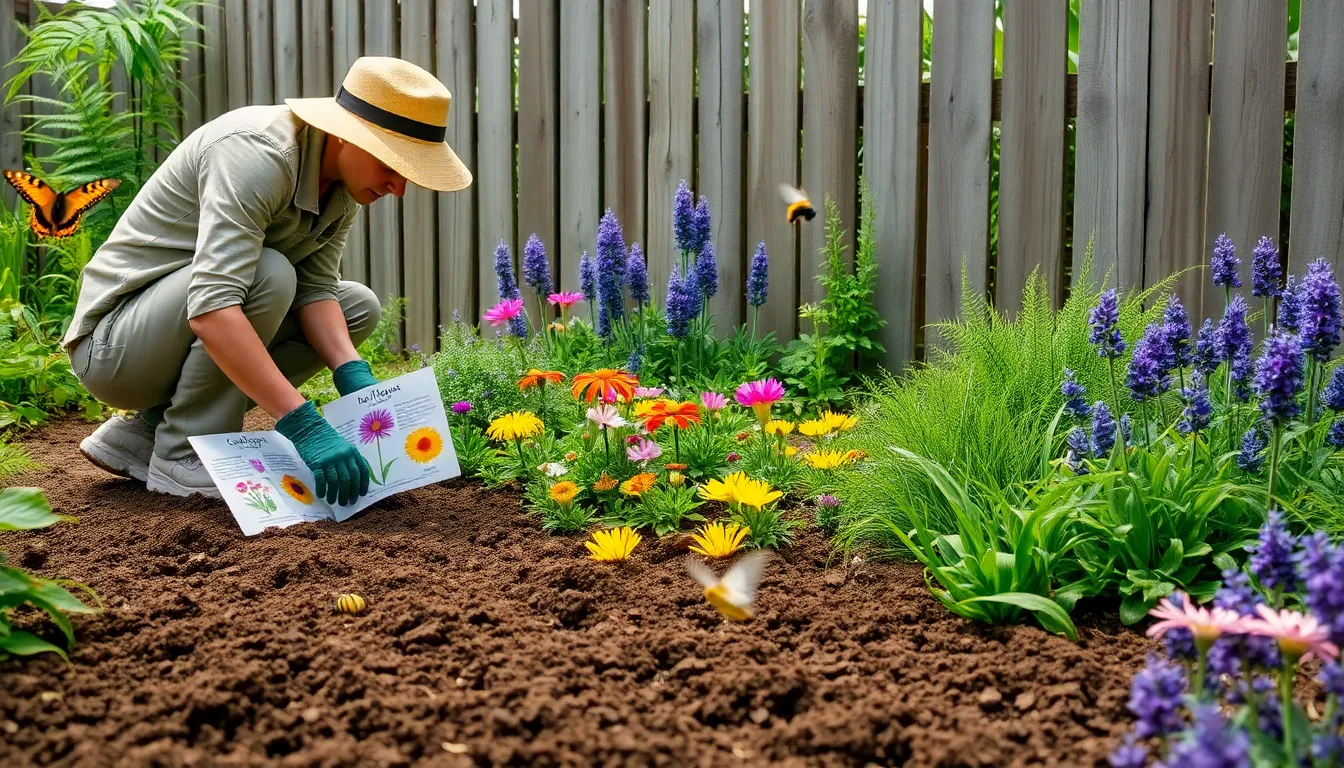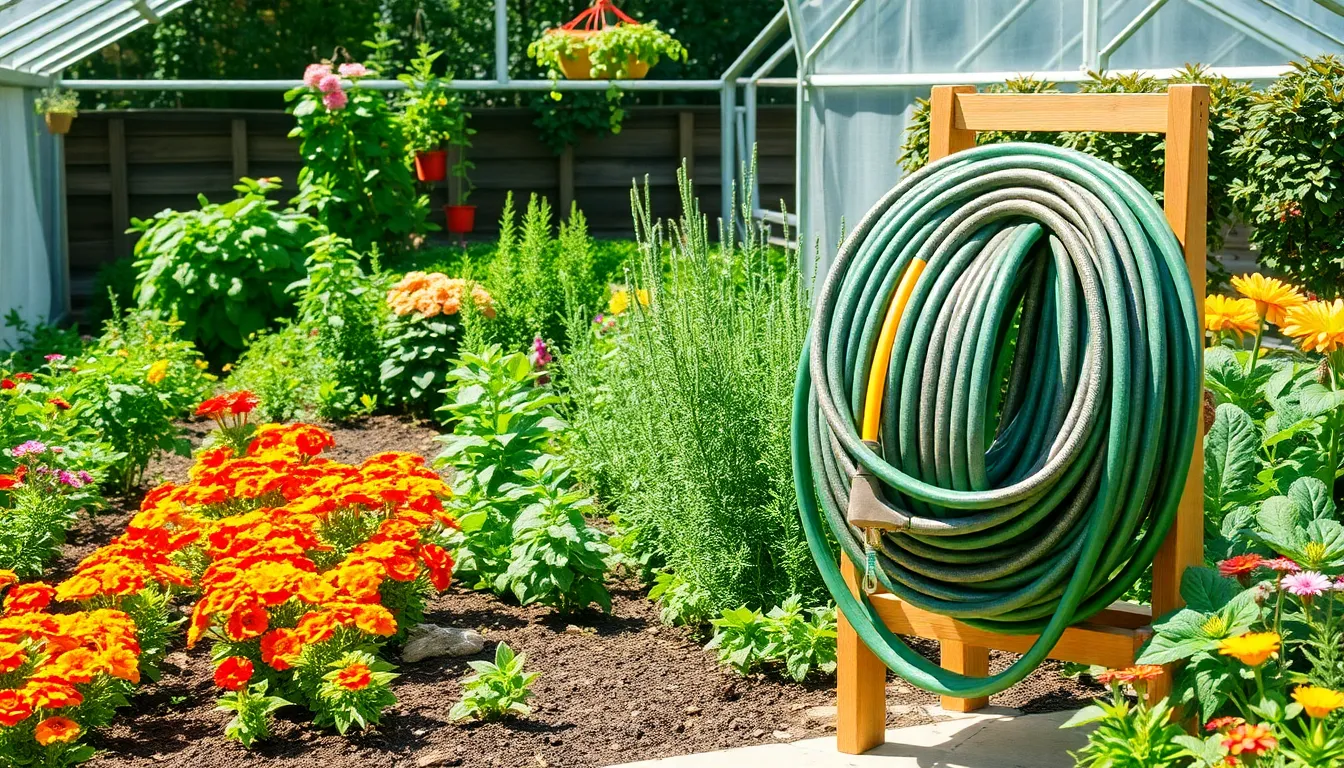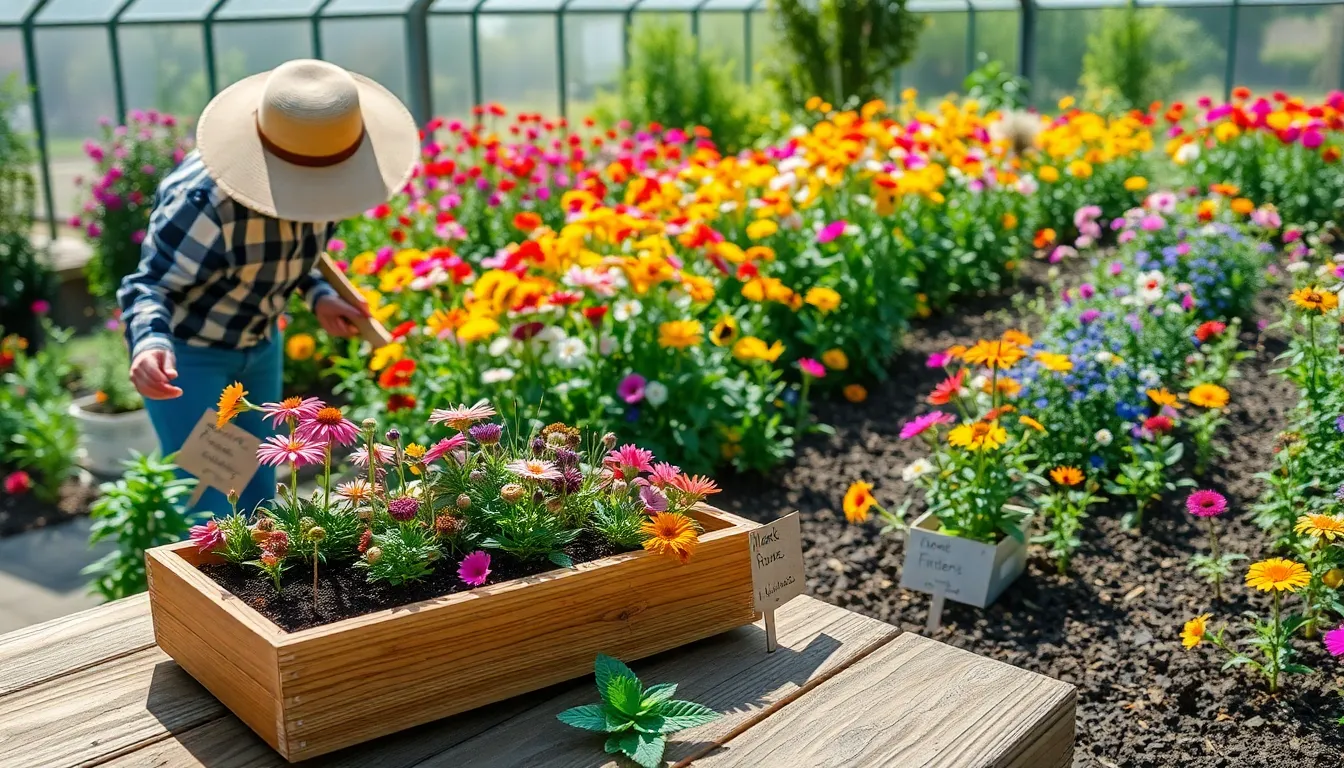Cultivating a wildflower garden is like inviting nature’s own art gallery into your backyard, where colors and textures paint a dynamic, ever-changing masterpiece. This gardening style celebrates the beauty of native flora, encouraging a vibrant ecosystem right at your doorstep. Whether you’re a budding gardener or have years of experience under your belt, the charm of wildflowers can transform your outdoor space into a haven of biodiversity. By planting a wildflower garden, you not only create a spectacle of natural beauty but also play a vital role in supporting local wildlife.
Imagine a garden abuzz with bees, butterflies, and birds, each contributing to a lively symphony of activity. Wildflower gardens offer more than visual appeal; they provide essential food and habitat for pollinators, which in turn benefit your entire garden ecosystem. In this article, you’ll learn how a wildflower garden can reduce maintenance efforts, improve soil health, and even conserve water. We will explore the practical steps to design and maintain your own patch of paradise, equipping you with the knowledge to let nature flourish.
For those who love the idea of a sustainable garden, wildflowers offer an eco-friendly option that thrives with minimal intervention. You’ll discover how to select the right seeds, prepare your soil, and manage your garden through the seasons, ensuring a spectacular display year after year. With a little planning and patience, a wildflower garden can bring unparalleled joy and satisfaction. Let us guide you through the process of creating a garden that’s as rewarding for you as it is for the environment.
Boosting Biodiversity and Ecosystems
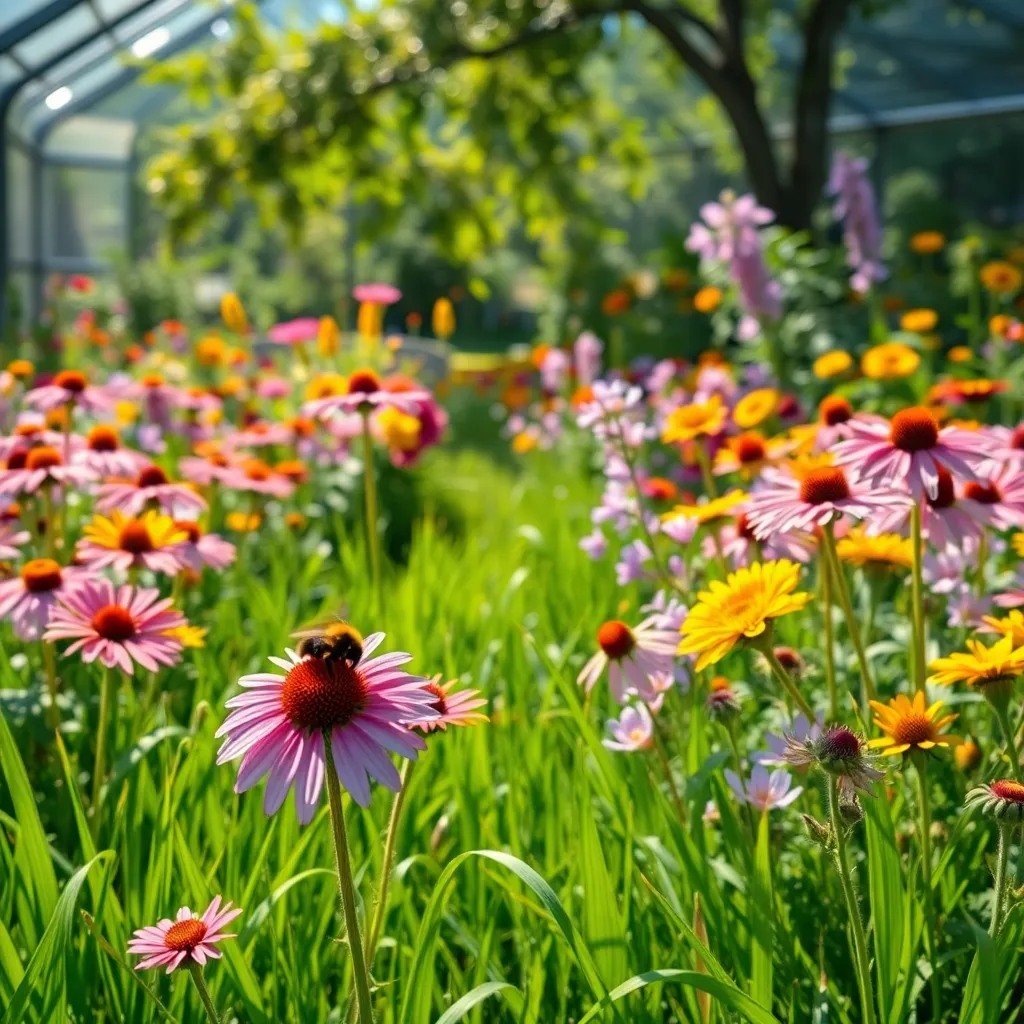
Planting a wildflower garden is a wonderful way to boost local biodiversity. By selecting a mix of native wildflowers, you support not only the plants themselves but also the myriad insects and animals that rely on them for survival.
Consider the soil type in your garden, as it plays a crucial role in the success of your wildflower patch. Whether your soil is sandy, clay, or loamy, there are specific wildflower species that will thrive in those conditions, making it vital to match plants to their ideal soil preferences.
To maintain a healthy ecosystem, it’s important to practice minimal soil disturbance when planting wildflowers. This encourages the existing soil structure to remain intact, aiding in the retention of beneficial microbes and organisms that contribute to a vibrant ecosystem.
Regular watering is essential, especially during the first few weeks after planting. However, once established, many wildflowers are drought-tolerant, allowing you to reduce watering frequency significantly.
For more advanced gardeners, integrating a variety of blooming periods can provide continuous food sources for pollinators throughout the growing season. Consider planting early, mid, and late-season bloomers to ensure your garden is a bustling hub of activity all year round.
Finally, avoid using pesticides or herbicides, as these can harm beneficial insects and disrupt the delicate balance you’ve worked to create. Instead, encourage natural pest control with companion planting techniques and the introduction of pest-predatory insects like ladybugs.
Low Maintenance and Cost-Effective
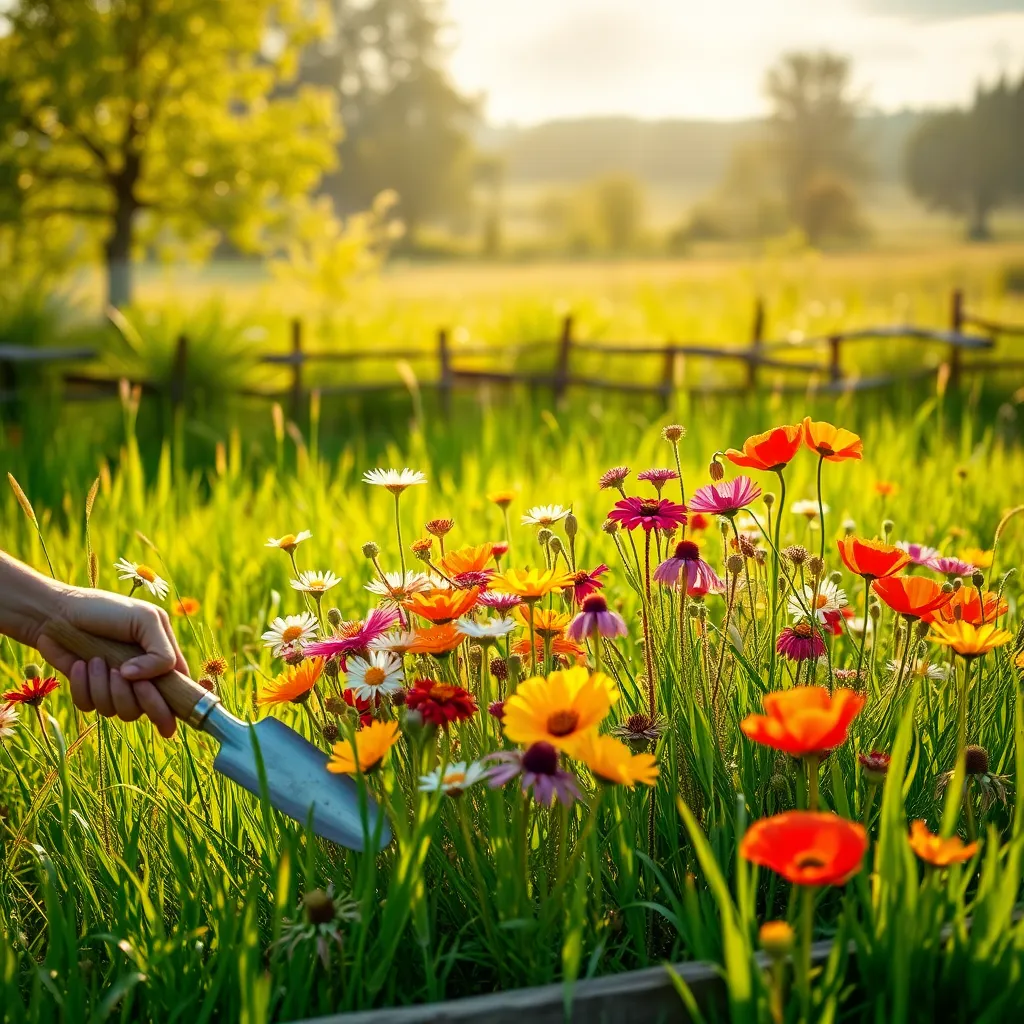
One of the greatest advantages of a wildflower garden is its low maintenance nature. Once established, wildflowers generally require minimal care, as they are suited to local conditions and can thrive without regular attention.
Choosing native wildflowers can further reduce the need for maintenance since they are adapted to the local climate and soil. This means they are better equipped to withstand drought and pests, reducing the need for frequent watering and chemical interventions.
To start a low-maintenance wildflower garden, prepare the soil by removing existing grass and weeds. After clearing the area, lightly till the soil and mix in a small amount of compost to improve nutrient availability for the seeds.
Once the seeds are sown, water them gently but consistently until they germinate. After that, wildflowers typically need watering only during prolonged dry spells, making them cost-effective and conserving water resources.
For those with more experience, consider implementing a mulching strategy to suppress weeds and retain soil moisture. Mulching with organic materials like straw or wood chips can further reduce maintenance needs and improve soil health over time.
Supporting Pollinators and Wildlife
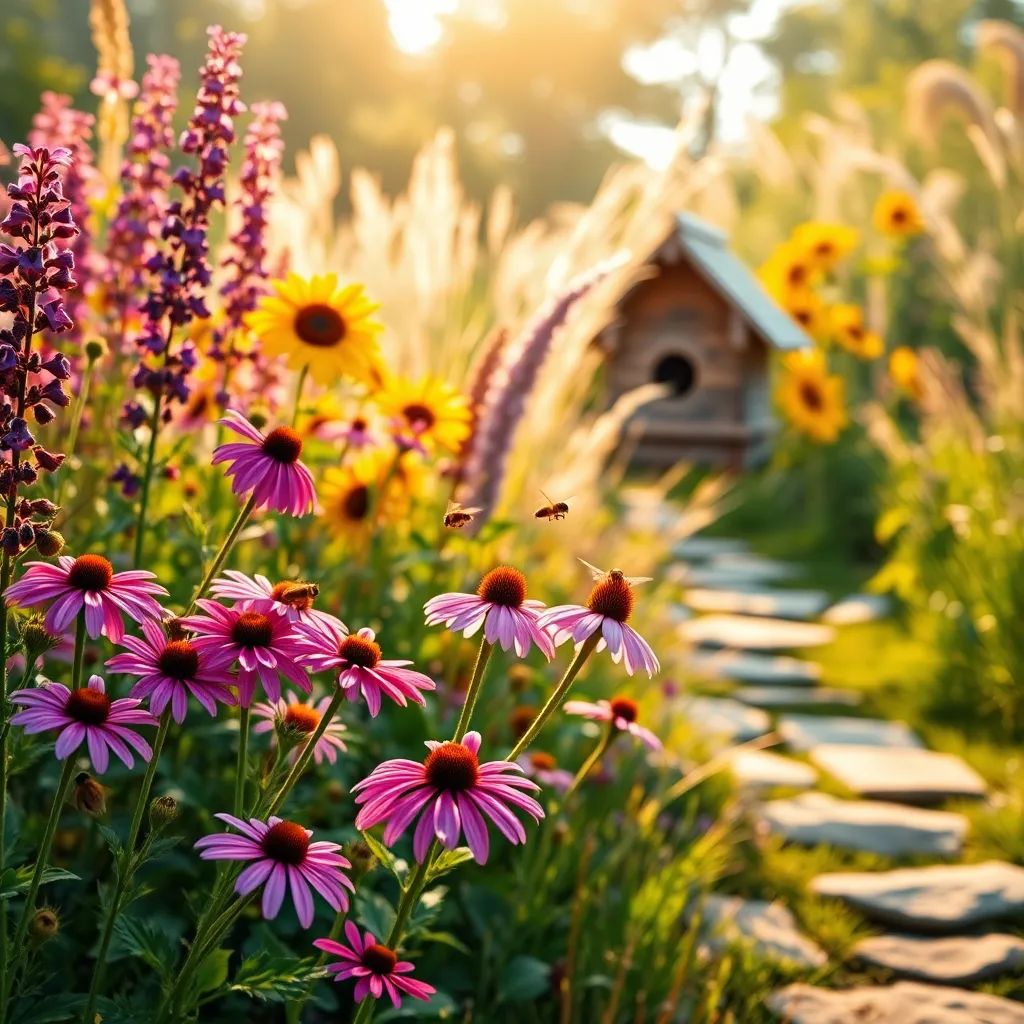
One of the most rewarding aspects of a wildflower garden is its ability to support pollinators and wildlife. By choosing a diverse mix of native wildflowers, you can create a habitat that attracts bees, butterflies, and other beneficial insects. To get started, consider planting species like coneflowers, milkweed, and bee balm, which are known for their attractiveness to pollinators. These plants not only provide nectar but also serve as host plants for caterpillars, ensuring a thriving ecosystem.
Incorporating wildflowers into your garden can significantly enhance biodiversity. Create a layered planting structure by including wildflowers of varying heights, such as tall sunflowers and shorter daisies, to provide shelter and food for different wildlife species. It’s essential to leave some areas undisturbed, as fallen leaves and plant debris offer shelter for overwintering insects and small mammals. This approach mimics natural habitats and encourages wildlife to thrive.
Watering your wildflower garden properly is crucial for its success in supporting wildlife. While wildflowers are generally drought-tolerant, providing supplemental water during prolonged dry spells can help maintain their vitality. Use a soaker hose or drip irrigation system to water deeply and infrequently, encouraging deep root growth and reducing the need for frequent watering. This not only conserves water but also creates a more stable environment for wildlife.
For those looking to go beyond the basics, consider adding a small water feature to further support wildlife. A shallow birdbath or a small pond can attract birds and amphibians, adding both beauty and ecological value to your garden. Ensure that the water source is kept clean and has gentle sloping sides to allow easy access for all creatures. Incorporating these elements can transform your wildflower garden into a lively sanctuary for a wide array of species.
Enhancing Garden Aesthetics Naturally
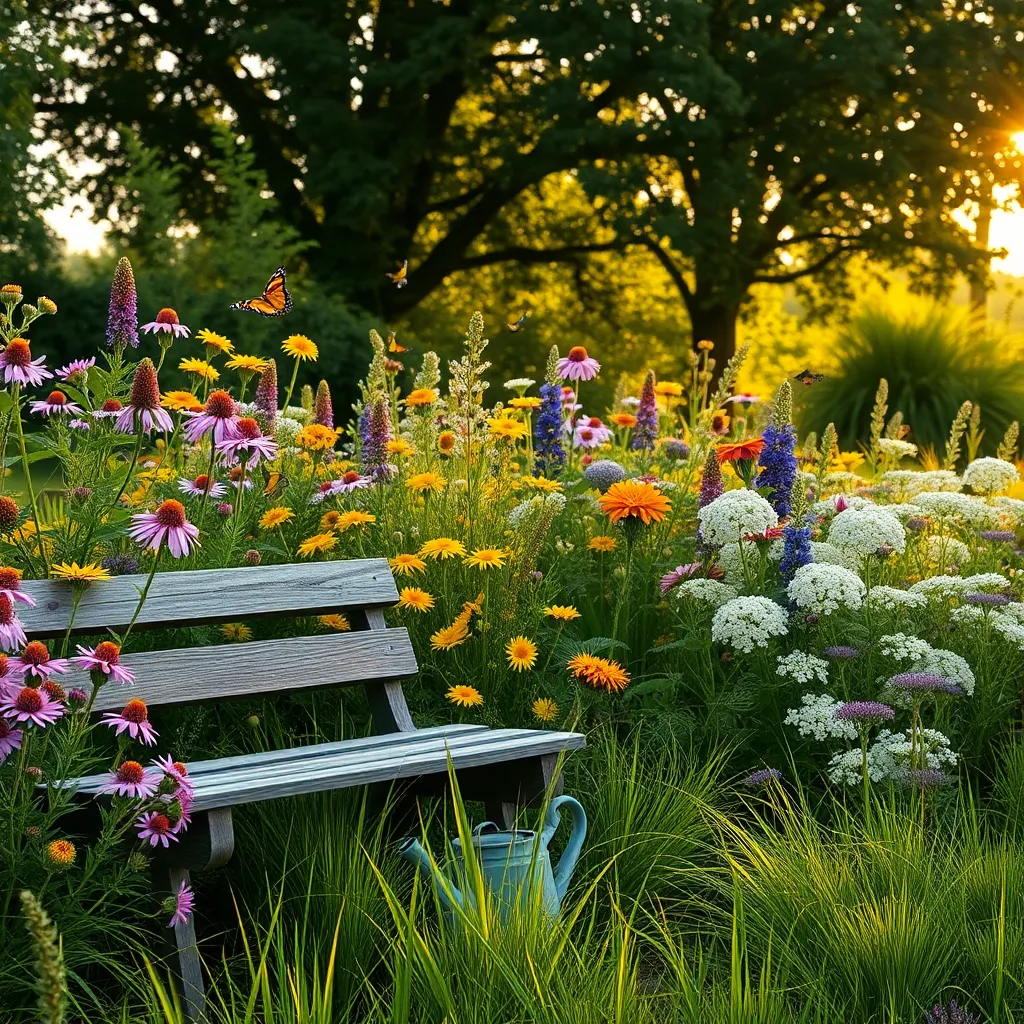
Wildflower gardens add a natural beauty that enhances the overall aesthetics of your outdoor space. By selecting a diverse mix of native wildflowers, you create a visually appealing landscape that blooms in varying colors and shapes throughout the seasons.
To maximize the visual impact, consider planting in clusters to mimic how these flowers grow in nature. This approach not only looks more organic but also helps certain flowers stand out, creating a tapestry of color and texture.
Choose flowers that thrive in your specific climate and soil conditions to ensure they grow healthily and beautifully. For instance, if you have sandy soil, consider planting wildflowers like Blanketflower or Black-eyed Susan, which are well-suited to such environments.
Maintaining the aesthetics of your wildflower garden requires minimal intervention, as these plants generally need less water once established. Watering deeply once a week should suffice, allowing the roots to grow strong and reducing the need for frequent irrigation.
For those seeking an advanced touch, intersperse your wildflowers with ornamental grasses to add height and movement to the garden. This not only enhances the visual dynamics but also provides a natural habitat for beneficial insects, contributing further to the ecosystem.
Improving Soil Health and Quality
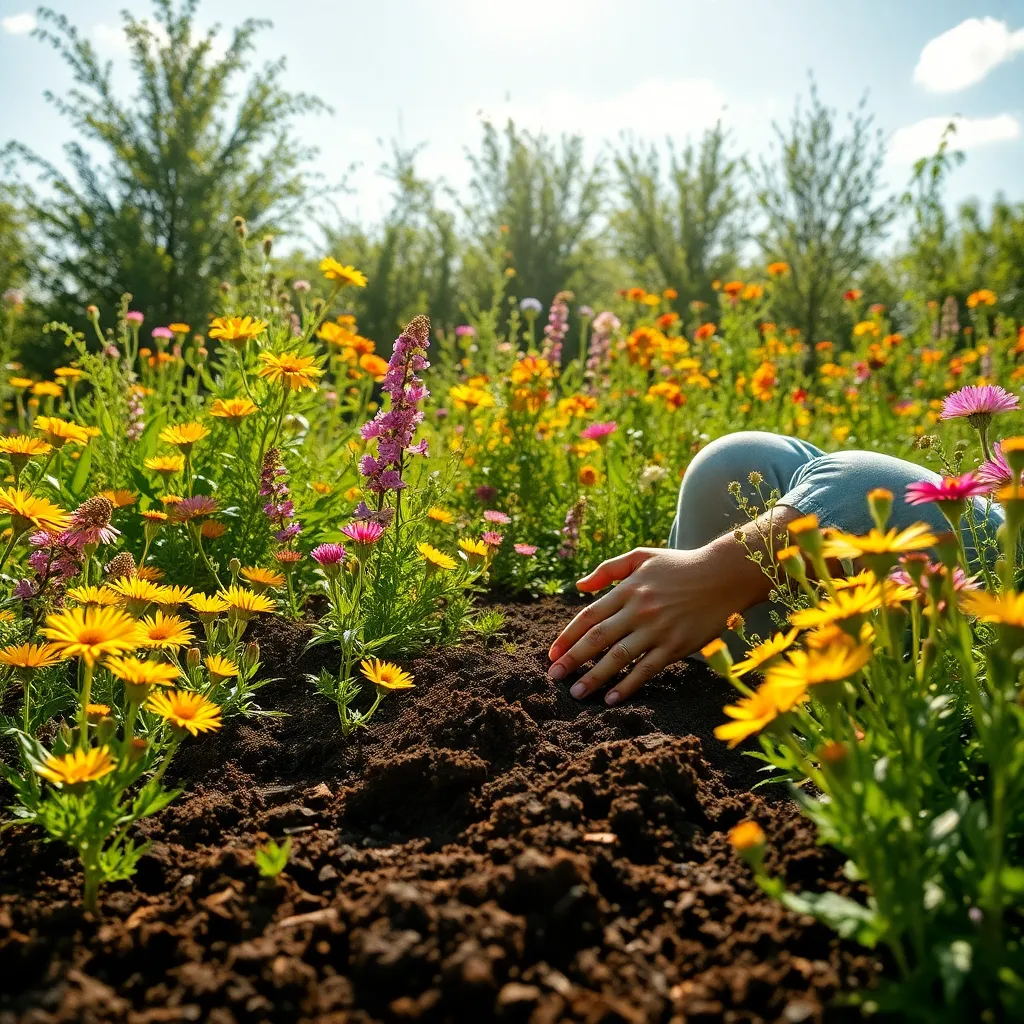
Planting a wildflower garden is a wonderful way to improve soil health and quality. The diverse root systems of wildflowers help to aerate the soil, which enhances water retention and nutrient absorption.
As wildflowers grow, they contribute organic matter to the soil through the natural process of leaf drop and decomposition. This organic matter acts as a natural fertilizer, enriching the soil and promoting a healthy ecosystem.
To see these benefits, ensure you choose a variety of wildflower species that are suitable for your local climate and soil type. Look for a mix that includes deep-rooted species like Black-eyed Susans and Coneflowers, which are particularly effective at breaking up compacted soil.
For gardeners looking to take it a step further, consider incorporating a layer of mulch around your wildflowers. Mulching helps to retain moisture, suppress weeds, and slowly adds nutrients to the soil as it decomposes over time.
Water your wildflower garden deeply but infrequently to encourage deep root growth, which further strengthens soil structure. Depending on your local climate, aim for a thorough watering about once a week, ensuring the soil is moist but not waterlogged.
Advanced gardeners can experiment with companion planting techniques, pairing wildflowers with other plants that benefit from improved soil conditions. Consider planting legumes, which can fix nitrogen in the soil, next to your wildflowers to enhance nutrient availability.
Conclusion: Growing Success with These Plants
In planting a wildflower garden, we unearth five relationship insights that can transform connections: nurturing growth, embracing diversity, fostering resilience, promoting balance, and cultivating beauty. Each of these concepts mirrors the care required to flourish in our relationships. Nurturing growth reminds us of the importance of supporting each other’s personal development. Embracing diversity encourages us to celebrate differences, enriching our shared experiences. Resilience teaches us to weather life’s storms together, while balance ensures we sustain harmony. Finally, cultivating beauty celebrates the joy and love that relationships bring into our lives.
As an immediate step, consider starting a small wildflower garden with your partner, a child, or a friend. This shared project can deepen bonds and serve as a living reminder of the principles that strengthen relationships.
Bookmark this article as your go-to guide for nurturing meaningful connections. Just as wildflowers thrive with care and attention, so too can your relationships blossom into lasting sources of happiness and fulfillment. Together, let’s plant the seeds of success in our relationships, ensuring they bloom beautifully for years to come.

